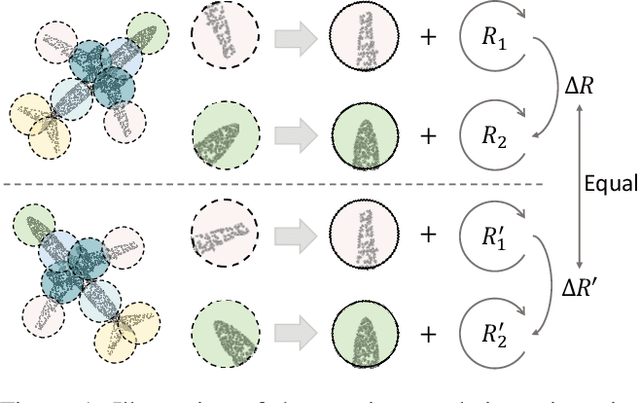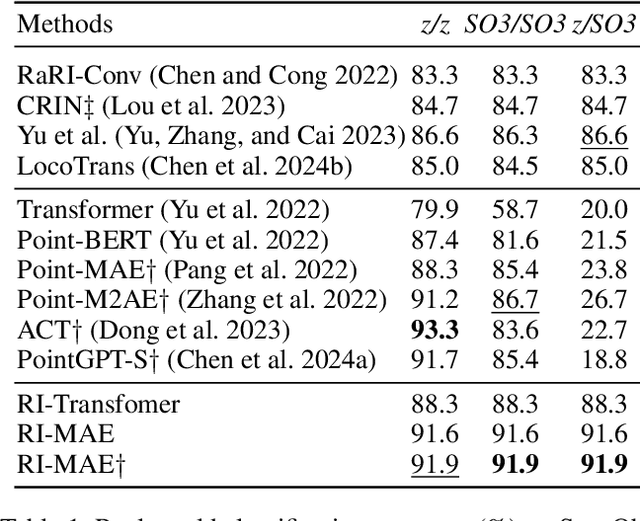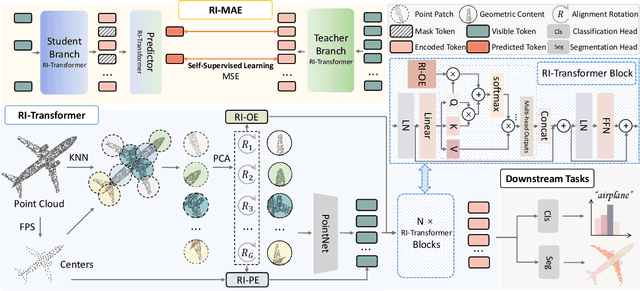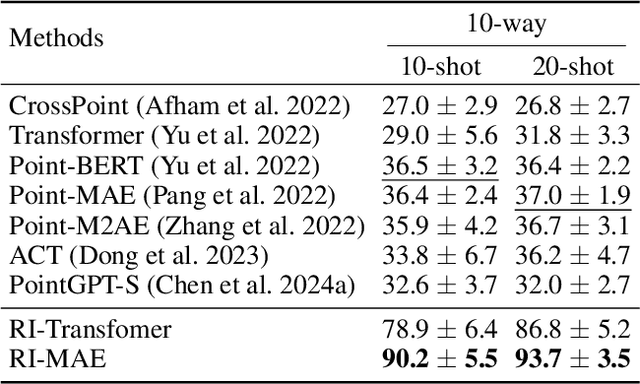Kunming Su
DC-PCN: Point Cloud Completion Network with Dual-Codebook Guided Quantization
Jan 19, 2025Abstract:Point cloud completion aims to reconstruct complete 3D shapes from partial 3D point clouds. With advancements in deep learning techniques, various methods for point cloud completion have been developed. Despite achieving encouraging results, a significant issue remains: these methods often overlook the variability in point clouds sampled from a single 3D object surface. This variability can lead to ambiguity and hinder the achievement of more precise completion results. Therefore, in this study, we introduce a novel point cloud completion network, namely Dual-Codebook Point Completion Network (DC-PCN), following an encder-decoder pipeline. The primary objective of DC-PCN is to formulate a singular representation of sampled point clouds originating from the same 3D surface. DC-PCN introduces a dual-codebook design to quantize point-cloud representations from a multilevel perspective. It consists of an encoder-codebook and a decoder-codebook, designed to capture distinct point cloud patterns at shallow and deep levels. Additionally, to enhance the information flow between these two codebooks, we devise an information exchange mechanism. This approach ensures that crucial features and patterns from both shallow and deep levels are effectively utilized for completion. Extensive experiments on the PCN, ShapeNet\_Part, and ShapeNet34 datasets demonstrate the state-of-the-art performance of our method.
RI-MAE: Rotation-Invariant Masked AutoEncoders for Self-Supervised Point Cloud Representation Learning
Aug 31, 2024



Abstract:Masked point modeling methods have recently achieved great success in self-supervised learning for point cloud data. However, these methods are sensitive to rotations and often exhibit sharp performance drops when encountering rotational variations. In this paper, we propose a novel Rotation-Invariant Masked AutoEncoders (RI-MAE) to address two major challenges: 1) achieving rotation-invariant latent representations, and 2) facilitating self-supervised reconstruction in a rotation-invariant manner. For the first challenge, we introduce RI-Transformer, which features disentangled geometry content, rotation-invariant relative orientation and position embedding mechanisms for constructing rotation-invariant point cloud latent space. For the second challenge, a novel dual-branch student-teacher architecture is devised. It enables the self-supervised learning via the reconstruction of masked patches within the learned rotation-invariant latent space. Each branch is based on an RI-Transformer, and they are connected with an additional RI-Transformer predictor. The teacher encodes all point patches, while the student solely encodes unmasked ones. Finally, the predictor predicts the latent features of the masked patches using the output latent embeddings from the student, supervised by the outputs from the teacher. Extensive experiments demonstrate that our method is robust to rotations, achieving the state-of-the-art performance on various downstream tasks.
 Add to Chrome
Add to Chrome Add to Firefox
Add to Firefox Add to Edge
Add to Edge